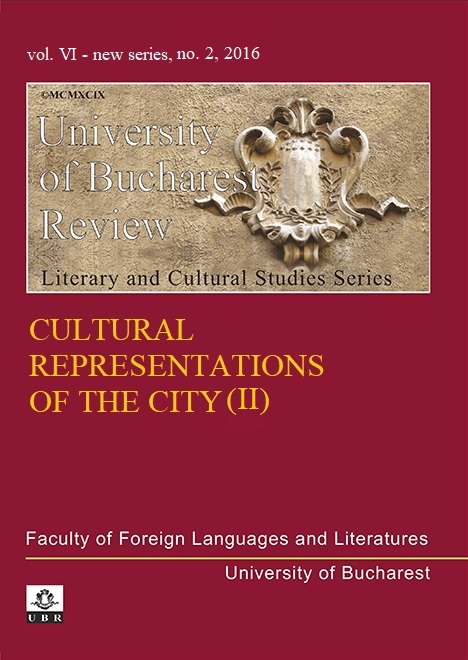PIAZZALE LORETO’ IN MILAN, FROM THE ’20s
TO THE PRESENT. ARCHITECTURAL AND
HISTORICAL MEMORIES FROM A SPACE OF
DIS/AFFECTION
PIAZZALE LORETO’ IN MILAN, FROM THE ’20s
TO THE PRESENT. ARCHITECTURAL AND
HISTORICAL MEMORIES FROM A SPACE OF
DIS/AFFECTION
Author(s): Silvia ColomboSubject(s): Architecture
Published by: Editura Universităţii din Bucureşti
Keywords: cultural studies; history; Italian studies; totalitarianism; memory studies; contested heritage;
Summary/Abstract: This study aims to highlight the role played by a significant public place ofMilan, ‘piazzale Loreto’ that, throughout time, has been at the centre of attention formany reasons, gradually becoming a place of dis/affection and contestation. In fact,the square, today, is a consequence of its painful past, and even the municipality hasnot been able to reconfigure it in a proper way, since it is still a huge void, anenormous square with an almost ignored commemorative monument at the centre.But first, it all started during the ’20s, when Milan was changing, becoming afinancial-cultural centre, and piazzale Loreto was a point of reference for touristsand workers who wanted a comfortable place to stay: actually the “Titanus”, thebiggest hotel of the city, was conceived as a monumental building, born to satisfy thepractical, modern needs of its middle-class hosts. Unfortunately, opened in 1928, itwas already in decline a few years later, due to the economic crisis and theinternational, difficult mood of the ’30s, which affected several European and non-European countries, Italy included.Then, during the Second World War, the building was given to the SS and, in 1943,bombed by the Anglo-American forces, to the point that, at the end of the conflict,the hotel was almost destroyed. Nevertheless, it became a passive witness of the‘Strage di piazzale Loreto’ (piazzale Loreto slaughter) on the 8th of August 1944,when a Nazi-fascist squad killed fifteen partisans. Again, just a few months later,after the fall of the regime, the same square was chosen as the ‘revenge place’where Benito Mussolini, Claretta Petacci and other fascists’ corpses were exhibitedin full public sight. Since even the plan conceived under the Reconstruction was notable to ‘redeem’ the place, after several decades, the place it is just a trafficintersection, where no one can easily pass through it by walking. All thesedifficulties are still demonstrated by the most recent debate, based on the(unrealized) idea that piazzale Loreto should house the Tree of Life Expo 2015.
Journal: University of Bucharest Review. Literary and Cultural Studies Series
- Issue Year: VI/2016
- Issue No: 2
- Page Range: 24-40
- Page Count: 17
- Language: English

